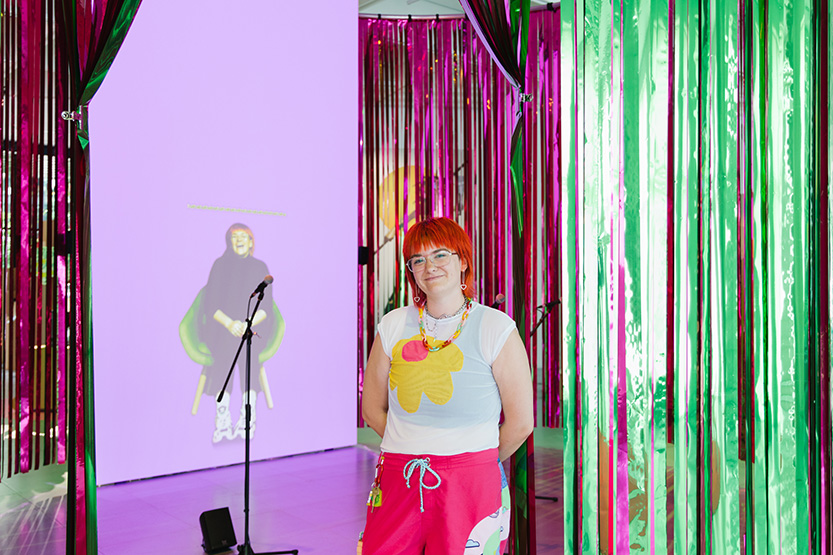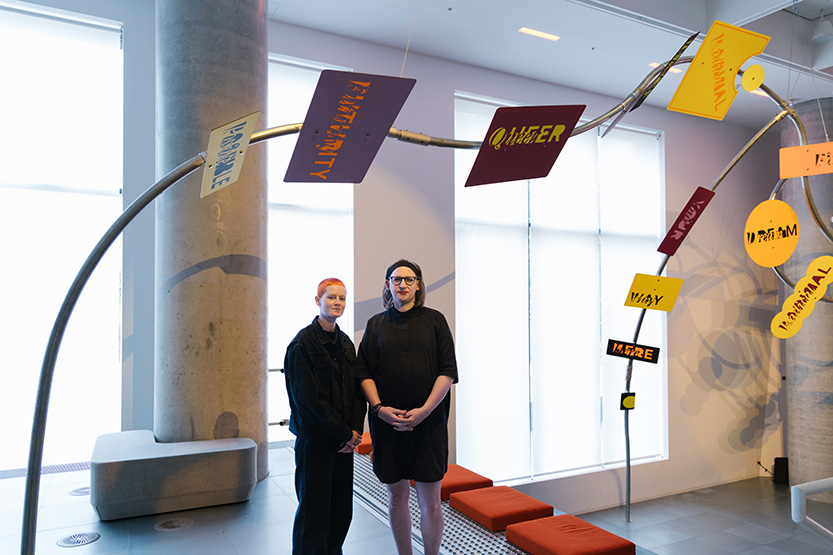Break the Binaries exhibition blends art, science and identity together
Science Gallery at the University of Melbourne launched its third exhibition, Break the Binaries, on February 18, with works centred around sharing people’s personal journeys with identity.
Developed in discussions with young people and an academic advisory group, Science Gallery director Dr Ryan Jefferies said the topic of identity in terms of gender, race and sexuality stood out as a theme of interest.
“We work closely with young adults from a range of backgrounds to discuss potential topics for exhibitions, and gender and identity continue to be themes of personal and universal relevance,” he said.
This is a bold and compelling exploration of the subject, where a spectrum of perspectives and personal histories are shared, and social norms and binary frameworks about gender, identity and cultural representation are challenged.
Drawing on an exhibition that was held at Science Gallery London, called GENDERS: Shaping and Breaking the Binary, Science Gallery Melbourne has created a playful, non-traditional gallery space with around 12 works from local and international artists.
An open call for submissions also resulted in a wide range of multidisciplinary works, from video to sound, sculpture, and multimedia, all of which explore a diverse and unique range of topics and ideas close to each creator’s heart.
Upon entering the exhibition, attendees are first met with George Goodnow and Simona Castricum’s bent steel sculpture work Wayfinding, which has fake street signs with words running along the entire structure.
The artists described their work as an exploration of the ideas of safety, possibility, and visibility from a queer trans perspective.
The gallery space then opens up to a burst of colour and activity.
Ash Hem’s UN(COMFY) encourages people to reach a place of being “comfortable with the discomfort that comes with being uncomfortable”.
The work invites people to sit comfortably on pillows as they listen to an audio mix of anonymous voices sharing their personal experiences of being confused with identity.
Other works focus entirely on multimedia, such as Zeth Cameron’s work Queervoice 101 – an interactive video installation that touches on elements of voice training, and challenges understanding of how voices may change in different settings and what this means.
Overlooking the entire gallery, from each and every corner, are six large-scale “superheroes”, illustrated by Yuri, Torres Strait and South Sea Islander Dylan Mooney.
The heroes don’t replicate what is seen through many movies, but instead reimagine them as characters who get strength and pride from who they are and their culture.
Exhibition curator Tilly Boleyn said Break the Binaries aimed to present a playful, welcoming and kaleidoscopic view of the chosen topic.
“Through the personal perspectives shared and interdisciplinary creative practice grounded in research, all of these works are intended to create connections and conversation,” she said.
Break the Binaries will be at the Science Gallery at the University of Melbourne until June 17, and entry is free. •
For more information: melbourne.sciencegallery.com/breakthebinaries

Bottega Tasca: Carlton’s go-to fine wine boutique








 Download the Latest Edition
Download the Latest Edition